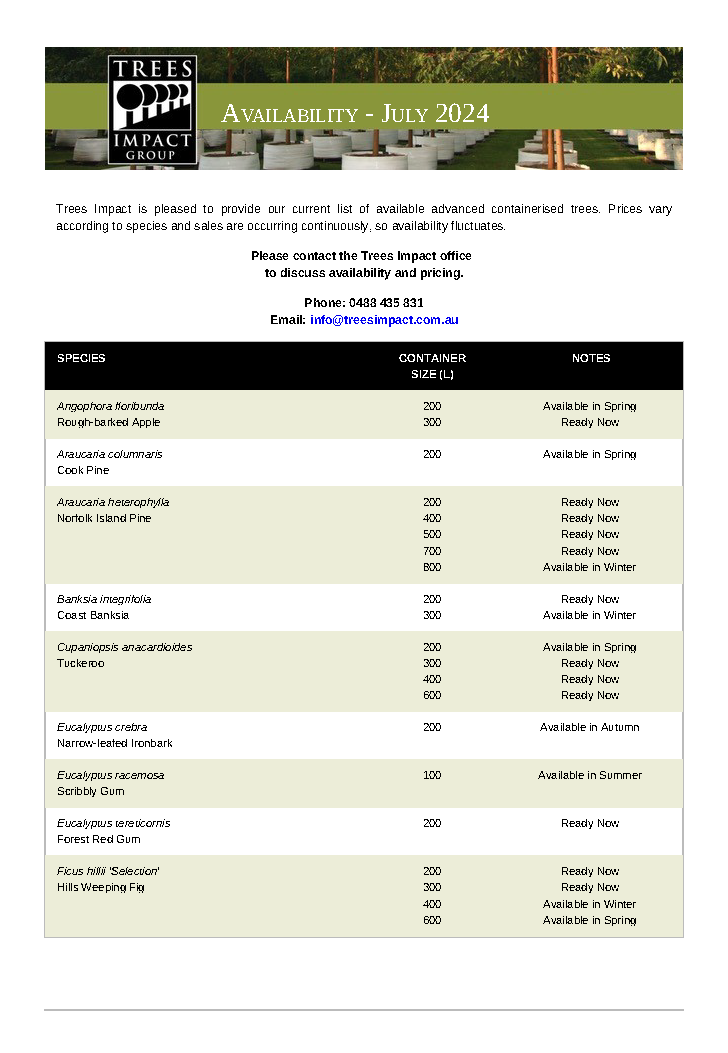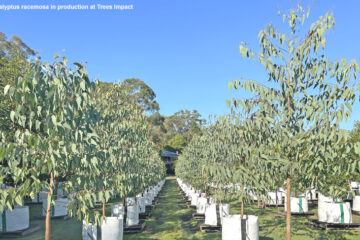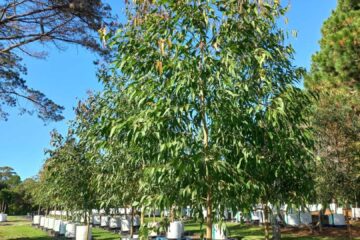New Plantings – Early Watering Needs; Plus the Impact of Rain
There are a couple of widespread misunderstandings in our industry regarding the water needs of newly-planted trees.
It is not uncommon to find the watering regime applied for a 400 litre tree is not materially different from that applied for surrounding tubestock – the same maintenance regardless of plant size. And, if it has rained, many people wrongly assume that the trees won’t need watering for a while. Sadly, both practices fail to acknowledge some simple and very relevant mathematical relationships that impact on the successful establishment of trees.
ADVANCED TREES VS TUBESTOCK
As trees get bigger, and rootball volumes increase, the ratio between the surface area of the rootball and the volume of the rootball decreases dramatically. Or, to put it another way, the proportion of the rootball that makes contact with the site soil becomes progressively less.
Consider the following examples:
- A rootball resulting from production in a 50 mm tube that is 150 mm deep has a surface area (sides only) of around 0.03 m2 and a volume of approx. 0.000375 m3. This results in a Surface Area:Volume Ratio of 80.
- On the other hand, a 400 litre rootball, with a diameter of 950 mm and a depth of 550 mm has a surface area (sides only) of around 1.642 m2. This results in a Surface Area:Volume Ratio of approximately 4.
The tube has, proportionally, 20 times as much contact with the site soils as does the 400 L rootball.
If we compare the root extension needed to effectively double the planted rootball volume, we get this: The roots originating from the tube need only grow around 10 mm while roots originating from the 400 litre rootball need to extend by around 200 mm to achieve the same result.
The practical implications for establishment and early watering and maintenance is that the bigger tree will need to extend roots significantly further into the site soils to achieve effective establishment – it will need to be watered more specifically and maintained for much longer than the tube.
The need for an extended and more intensive period of watering and early maintenance for the bigger tree becomes obvious.
IMPACT OF RAIN
Secondly, the assumption that “if it rains the tree has been watered” fails to take account of the very small rootball/root plate diameter of the newly planted tree.
Consider the following:
- A containerised 400 litre tree, 4.75 m tall is planted into a new landscape. The surface area of the top of the 950 mm rootball is approximately 0.7 m2.
- However, had this tree grown naturally in the same location, it could be expected to have a nominal root plate diameter equal to twice the height of the tree, or 9.5 metres. The surface area of this nominal root plate would be approximately 70 m2.
- In the event of 10 mm of rainfall, the newly planted tree can, in theory, access 7 litres of water, while the established tree can access 700 litres of water – 100 times as much.
To further add to this problem, if the newly planted tree has a dense crown, then much of that tree’s 7 litres of rainfall will fall out at the drip line and miss the rootball altogether.
Rainfall generally only helps newly planted trees by reducing moisture stress for the duration of the rain. Rarely does it effectively water the tree.


